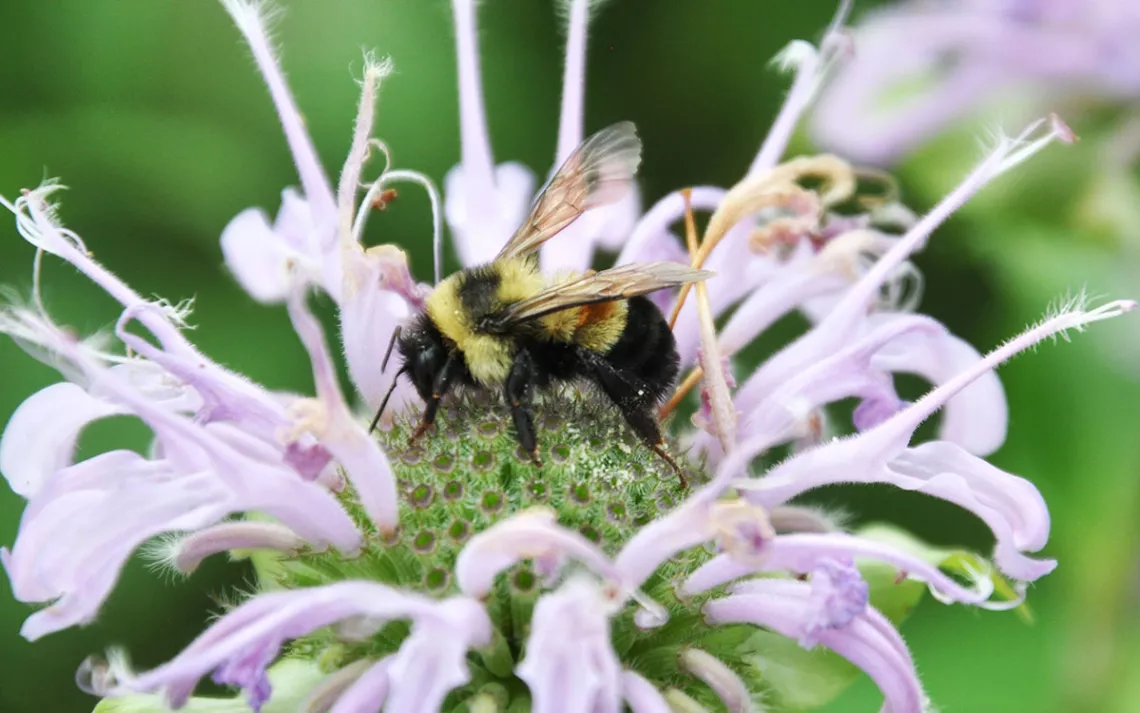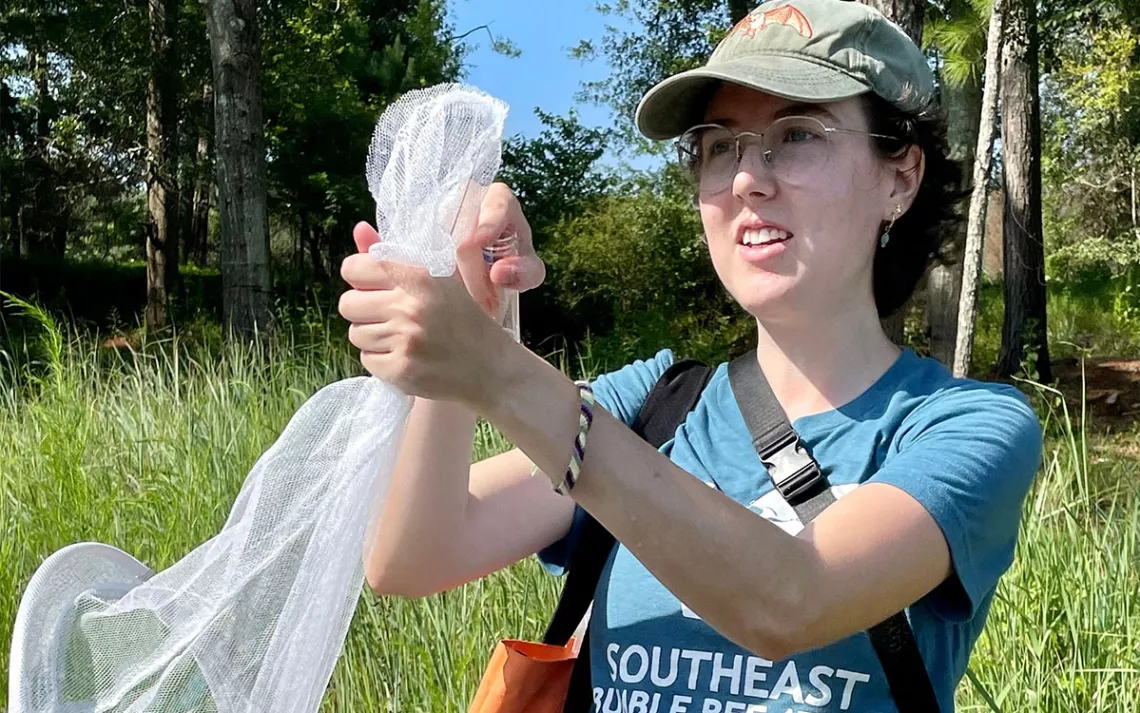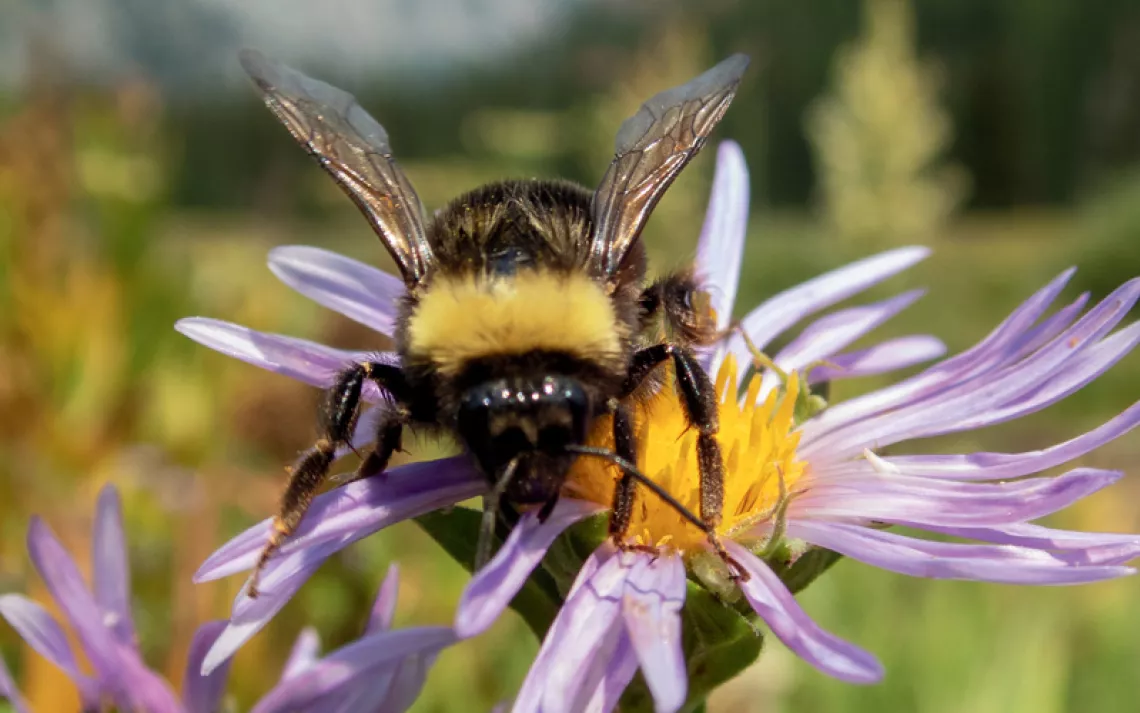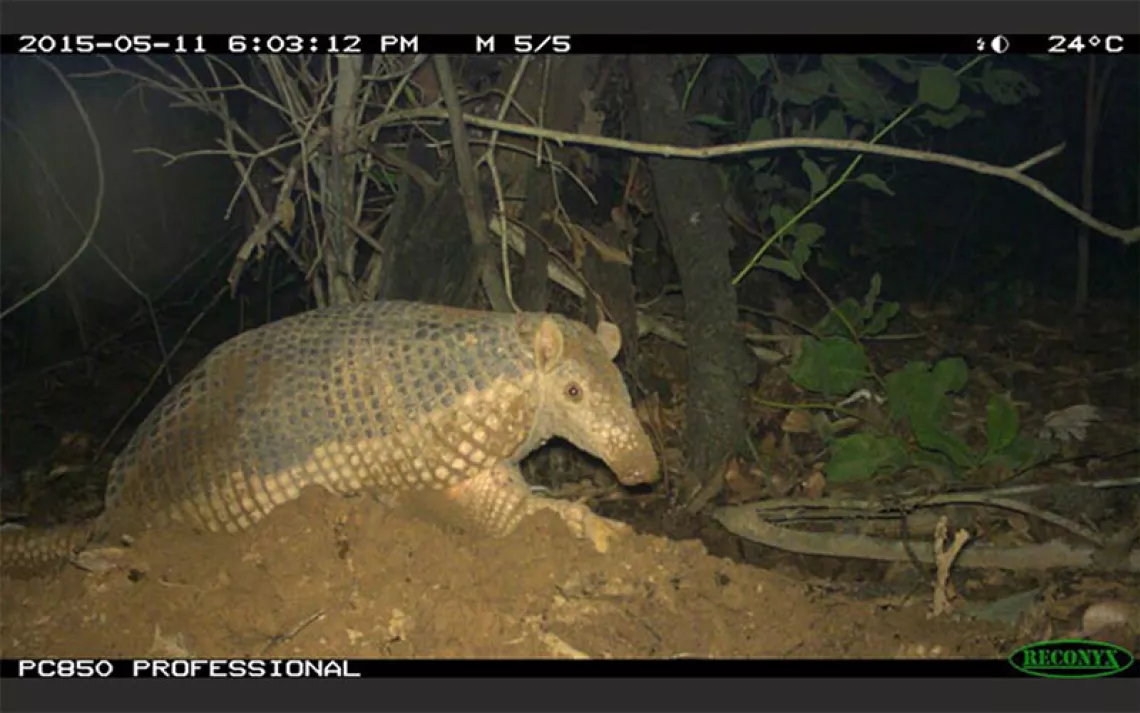Tiny Census, Big Impacts Thanks to the Southeast Bumble Bee Atlas
The new initiative strives to inform pollinator conservation

Rusty patched bumble bee. | Photo by Jill Utrup/USFWS
Without a moment’s hesitation, Bryan Tompkins pulls a glass vial from his pocket, approaches a clump of purple aster, and slips the jar over a black and yellow blur. “Common eastern bumblebee, male,” he announces after a quick glance from under his wide-brimmed sun hat. “The males can’t sting, so if you really want a good party trick, go learn your male bumblebees and grab one,” he adds with a sly grin.
Through his work with the US Fish and Wildlife Service’s field office in Asheville, North Carolina, Tompkins has had a lot of practice scooping up and identifying bumblebees. There aren’t many people as comfortable handling the insects as he is—and for those working to preserve pollinators, that’s been a problem.
Laurie Hamon is a biologist with the Xerces Society for Invertebrate Conservation, an international nonprofit devoted to protecting insects. As ubiquitous as bumblebees are, she explains, the limited number of scientists studying them means there’s been relatively little effort to establish the range of individual species, what host plants they most prefer, and what habitats support the most thriving populations. “Without that information, it’s very difficult to tell which species need help,” she says.
The Xerces Society, together with federal and state wildlife officials, is working to fill those knowledge gaps through the Southeast Bumble Bee Atlas. The citizen science project is enlisting volunteers across the Carolinas, Georgia, and Tennessee to hunt down bumblebees and report their findings on the online platform Bumble Bee Watch.
Although Xerces has organized similar efforts across the country, starting with the Pacific Northwest in 2018, the Southeast project is the region’s first of its kind. The atlas wrapped up its initial year of observations in September, with over 1,800 bees recorded during more than 190 surveys. Fieldwork will continue through 2025; the goal is to put trained eyes on the landscape at least twice a year in each of 276 “grid cells.”
Hamon says bumblebees are a perfect subject for amateur naturalists. “You can pretty reliably ID them from a photograph, so there’s no harm to the bees. It’s catch and release, and you can still get that data,” she explains. (She trains people to slow the insects down for their close-ups by chilling them on ice.)
Atlas volunteers have a lot to look for. Previous observers have reported at least 15 different bumblebees as living in the Southeast, including the rusty patched bumblebee and variable cuckoo bumblebee, both classified as critically endangered on the International Union for Conservation of Nature’s Red List of Threatened Species. But several of those species haven’t been recorded by scientists anywhere in the region for years.
Without basic information about their abundance and distribution, says Gabriela Garrison, it’s hard for bees to qualify for formal protection. As a biologist with the North Carolina Wildlife Resources Commission, she worked closely with Tompkins to bring the atlas to the Southeast and recruit volunteers.

Biologist Laurie Hamon with the Xerces Society for Invertebrate Conservation demonstrates proper net technique during a Southeast Bumble Bee Atlas training session at Georgia's Panola Mountain State Park. | Photo by Dana Kuehn, courtesy of Pamela Zendt
Several Southeastern species should probably be listed as federally endangered, Garrison argues, but only the rusty patched bumblebee enjoys that status. Her own agency classifies seven bumblebees as “species of greatest conservation need,” although none are protected by the state’s Endangered Species Act. “I’m the only person in my agency of 600-plus people doing pollinator surveys,” she says. “We have got to have more people out looking to see what species are still existing and where they're existing.”
The data gathered through the atlas, continues Garrison, will allow each participating state to refine its Wildlife Action Plan, a comprehensive document used to shape land management and prioritize funding. The new information will also help state wildlife experts advise private landowners, who manage roughly 90 percent of land across the study area, and inform federal decisions about listing bumblebee species as endangered.
Projects like the atlas are particularly critical given the range of pressures that the insects face. While information may be spotty for individual species, Tompkins says he’s observed clear and rapid declines in bumblebees overall. “This summer, for me here in the mountains, has been really bad,” he says. “About three or four species that I used to see every year, at least even in small numbers, I did not see at all.”
Habitat loss is a major concern as land gets lost to development and the native plants that bumblebees favor get replaced by introduced landscaping. So too is disease, especially viruses and fungi that have spread from domesticated bees kept for agriculture to wild species.
And climate change is disrupting the natural rhythms bees have relied on for millennia. Warmer soil temperatures, Tompkins says, are leading some queen bees to emerge from winter dormancy as early as March, well before their usual April or May debut. If a late freeze strikes and disrupts the growth of their host plants, those queens are likely to starve, causing species to be entirely wiped out of the area.
Given these headwinds, the atlas’s backers hope that, beyond its scientific value, the work will encourage broader public awareness and advocacy. Hamon with Xerces notes that nearly 300 people have gone through in-person training sessions for the project, and an online orientation video has close to 800 views.
That’s been the case for Pamela Zendt, a professional writing graduate student at Georgia’s Kennesaw State University and editor of The Everyday Scientist, a weekly newsletter. She attended an August training session and conducted several surveys near Rockmart, about 50 miles northwest of Atlanta.
Zendt says participating in the atlas has given her a new appreciation for the insects and the ecological role they play as pollinators. It’s given her a sharper eye, allowing her to notice the bees’ yellow saddlebags of pollen and the tear-shaped head dot that marks the common eastern bumblebee.
It’s also brought her a new source of joy: watching bees emerge from the deep trumpets of flowers, absolutely covered in pollen. “They’re like kids in a candy store—it’s so cute,” she says with a laugh.
 The Magazine of The Sierra Club
The Magazine of The Sierra Club



